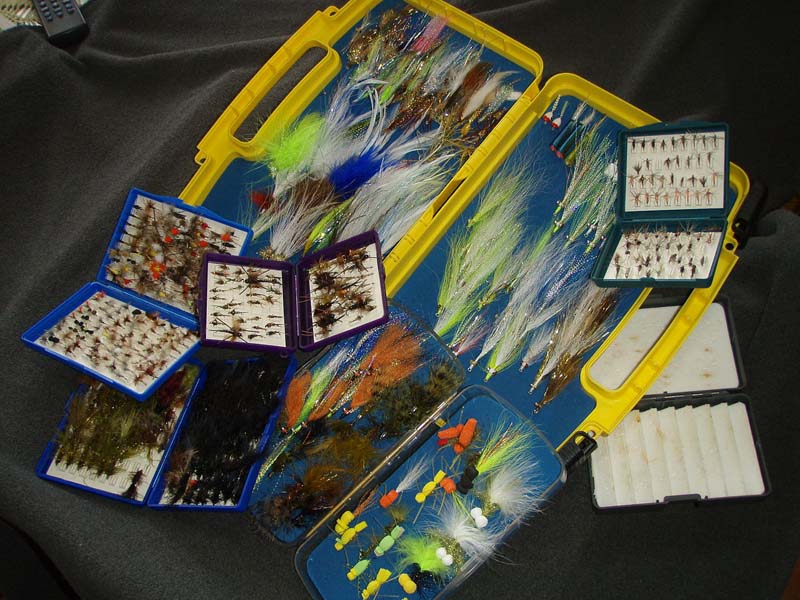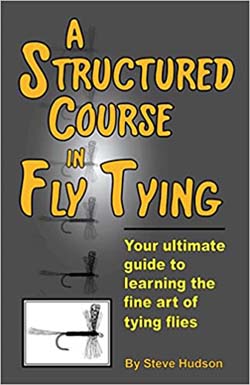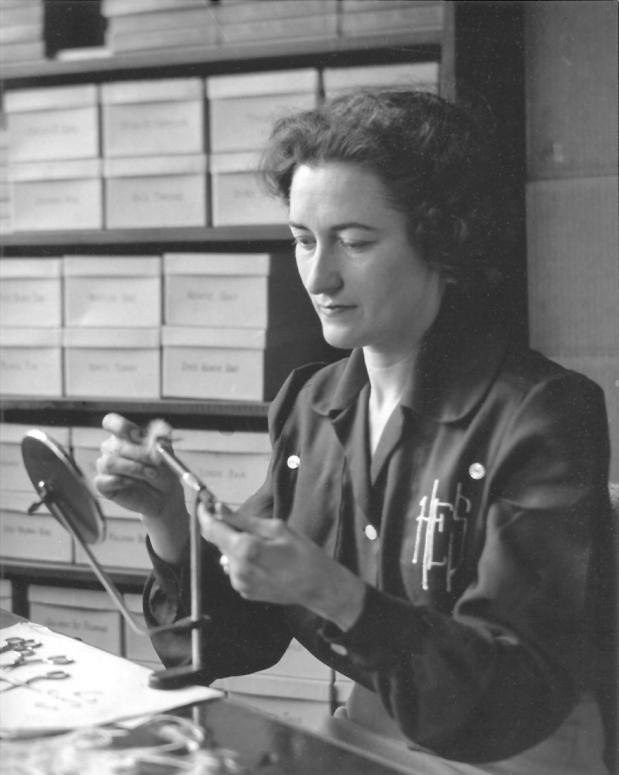
Assortment of fly boxes with trout, warm-water and saltwater flies. Photo credit Mike Cline.
I replied immediately, no, you probably will not save money tying your flies
By Skip Clement
Harlan, a friend of mine for 40 years and a person I’d fly fished with for decades, called to ask about fly tying. He said, ‘Is it cheaper to tie your flies than buy them online, at a big box store, or a fly shop?’
Online, especially from China and specific African sectors, are cheap and can be terrible products or scammers—the next cheapest is a big box store, and usually much more expensive at a fly shop. But tying, generally, is not cheaper.
A long pause followed
Then,’ he said, ‘why would anyone tie at all?’ At first, I told him it’s all about curiosity, seeking knowledge, and a challenge that morphs into the first fish you catch on a fly you tied. That kind of success, as you know, breeds confidence, encourages getting better, and the sustaining juices of pent-up creativity bubble up and make you feel good.
There is a convenience factor, and it does save money if you’re headed out to fish your home water and you get a report the ‘whatever fishes’ are hitting on foam ants with a yellow dubbed crown in #4 and #6 on 1X long straight eye hook. And you look through your flies, and there’s not one, and the fly shop is 45 minutes away in the opposite direction, and it opens at 10 am. And they won’t have them. Then, you win because you can tie.
Here’s what I told Harlan:
Your prime source for fly tying is your local fly shop. Ask them to put together a kit and sign up for tying classes. The fly shop wants you to succeed, they want you happy, they need you as a customer, and they know what they’re talking about.

Steve Hudson has enjoyed fly tying and fly fishing for many years and has taught thousands of people to tie flies. An award-winning outdoor writer and illustrator, he has written extensively about fly fishing, fly tying, hiking, travel, and outdoor recreation, along with numerous magazine articles. He has more than 20 books to his credit.
There are three things you’ll want to consider to maximize your initiating experience with the best outcome a commitment.
1. Buy a quality tools kit.
2. Buy a quality ‘feathers’ kit.
3. Make sure to get hooks that are practical for where you intend to fish. You don’t want hooks for sharks when your intention is stocked rainbow trout.
4. Buy a good book that is written by a pro and approaches tying with an emphasis on techniques. There are several good books on that subject, but only one stands out for coverage that can take a beginner to intermediate in a short time. It’s Steve Hudson’s STRUCTURED COURSE . . .
A partial list of fly tying Tools Kits providers:
The quality of tools from Loon sets the mark very high. I’ve been replacing my desk with their tools for over two years. So happy with that decision. The lesser tools are making my go-bag travel tying kit. Dr Slick.
1. Loon
2. Orvis
4. Umpqua
5. Wapsi
6. Cabela’s; Gander Mountain; Bass Pro Shops,
7. Etsy

Helen Shaw, singularly revered and honored in a time when fly fishing was almost 100% men, she overcame the common prejudices of the day with her fly tying knowledge and fly fishing accomplishments. Shaw was the unheralded “Mother of Modern Day Fly Fishing,” and she was followed by the incomparable Joan Wulff.
Materials [feathers]:
There are several great suppliers of quality tying materials, but Whiting Farms does not have a kit.
1. Hareline
3. Umpqua
4. J. Stockard
5. Orvis
NOTE: Oddly, the Orvis “owned and operated” retail stores are very light on tying, but the managers of the fly shops I’ve encountered are more than up to speed on tying and could very successfully put together a kit for you. Orvis endorsed fly shops will, generally, have full service fly tying sections devoted to fly tying. The Orvis online choices are more than adequate.
I’m sure our readers who tie know more than me, and I’ll post their comments to further help you improve your knowledge and provide more options than offered here.
The vise:
The vise is the engine of fly tying. Like tools, if it’s junk, your enjoyment and tie quality is significantly impacted. That’s why your best bet on entry level with anything fly fishing is to go to your local fly shop, or contact a pro guide for the best possible “directions.” The fly shop or guide will never recommend anything that is throw away when you’ve progressed, and that is key.
Companies that meet the needs of newcomers to fly tying lead off, usually, is with “C” clamping vises. The photo illustrates how they’re anchored to a table/desk. Like Kelley Galloup, many highly skilled fly tyers prefer “C” clamped vises. They put the tyer in a look-down on top of the work position when tying – not reaching over the work to tie.
Here are some known names of vise manufacturers:
1. Renzetti
2. Regal
3. Stonfo
4. Dyna-King
5. Griffin
6. Peak
7. Cabela’s
8. Orvis
9. HMH
A good explanation of vise types, features, pros, and cons comes in a video by Kelly Galloup . . .

